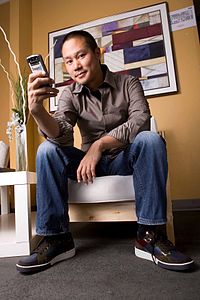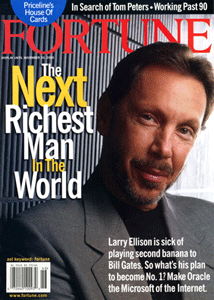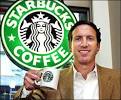
Source: http://www.achievement.org/autodoc/page/bez0bio-1
Jeffrey P. Bezos was born in Albuquerque, New Mexico. His mother was still in her teens, and her marriage to his father lasted little more than a year. She remarried when Jeffrey was four. Jeffrey’s stepfather, Mike Bezos, was born in Cuba; he escaped to the United States alone at age 15, and worked his way through the University of Albuquerque. When he married Jeffrey’s mother, the family moved to Houston, where Mike Bezos became an engineer for Exxon. Jeffrey’s maternal ancestors were early settlers in Texas, and over the generations had acquired a 25,000-acre ranch at Cotulla. Jeffrey’s grandfather was a regional director of the Atomic Energy Commission in Albuquerque. He retired early to the family ranch, where Jeffrey spent most of the summers of his youth, working
withhis grandfather at the enormously varied tasks essential to the operation.
From an early age, Jeffrey displayed a striking mechanical aptitude. Even as a toddler, he asserted himself by dismantling his crib with a screwdriver. He also developed intense and varied scientific interests, rigging an electric alarm to keep his younger siblings out of his room and converting his parents’ garage into a laboratory for his science projects. When he was a teenager, the family moved to Miami, Florida. In high school in Miami, Jeffrey first fell in love with computers. An outstanding student, he was valedictorian of his class. He entered Princeton University planning to study physics, but soon returned to his love of computers, and graduated with a degree in computer science and electrical engineering.
After graduation, Jeff Bezos found employment on Wall Street, where computer science was increasingly in demand to study market trends. His went to work at Fitel, a start-up company that was building a network to conduct international trade. He stayed in the finance realm with Bankers Trust, rising to a vice presidency. At D. E. Shaw, a firm specializing in the application of computer science to the stock market, Bezos was hired as much for his overall talent as for any particular assignment. While working at Shaw, Jeff met his wife, Mackenzie, also a Princeton graduate. He rose quickly at Shaw, becoming a senior vice president, and looked forward to a bright career in finance, when he made a discovery that changed his life — and the course of business history.
The Internet was originally created by the Defense Department to keep its computer networks connected during an emergency, such as natural catastrophe or enemy attack. Over the years, it was adopted by government and academic researchers to exchange data and messages, but as late as 1994, there was still no Internet commerce to speak of. One day that spring, Jeffrey Bezos observed that Internet usage was increasing by 2,300 percent a year. He saw an opportunity for a new sphere of business, and immediately began considering the possibilities.
In typically methodical fashion, Bezos reviewed the top 20 mail order businesses, and asked himself which could be conducted more efficiently over the Internet than by traditional means. Books were the commodity for which no comprehensive mail order catalogue existed, because any such catalogue would be too big to mail — perfect for the Internet, which could share a vast database with a virtually limitless number of people.
He flew to Los Angeles the very next day to attend the American Booksellers’ Convention and learn everything he could about the book business. He found that the major book wholesalers had already compiled electronic lists of their inventory. All that was needed was a single location on the Internet, where the book-buying public could search the available stock and place orders directly. Bezos’s employers weren’t prepared to proceed with such a venture, and Bezos knew the only way to seize the opportunity was to go into business for himself. It would mean sacrificing a secure position in New York, but he and his wife, Mackenzie, decided to make the leap.
Jeff and Mackenzie flew to Texas on Independence Day weekend and picked up a 1988 Chevy Blazer (a gift from Mike Bezos) to make the drive to Seattle, where they would have ready access to the book wholesaler Ingram, and to the pool of computer talent Jeff would need for his enterprise. Mackenzie drove while Jeff typed a business plan. The company would be called Amazon, for the seemingly endless South American river with its numberless branches.
They set up shop in a two-bedroom house, with extension cords running to the garage. Jeff set up three Sun microstations on tables he’d made out of doors from Home Depot for less than $60 each. When the test site was up and running, Jeff asked 300 friends and acquaintances to test it. The code worked seamlessly across different computer platforms. On July 16, 1995, Bezos opened his site to the world, and told his 300 beta testers to spread the word. In 30 days, with no press, Amazon had sold books in all 50 states and 45 foreign countries. By September, it had sales of $20,000 a week. Bezos and his team continued improving the site, introducing such unheard-of features as one-click shopping, customer reviews, and e-mail order verification.
The business grew faster than Bezos or anyone else had ever imagined. When the company went public in 1997, skeptics wondered if an Internet-based start-up bookseller could maintain its position once traditional retail heavyweights like Barnes and Noble or Borders entered the Internet picture. Two years later, the market value of shares in Amazon was greater than that of its two biggest retail competitors combined, and Borders was striking a deal for Amazon to handle its Internet traffic. Jeff had told his original investors there was a 70 percent chance they would lose their entire investment, but his parents signed on for $300,000, a substantial portion of their life savings. “We weren’t betting on the Internet,” his mother has said. “We were betting on Jeff.” By the end of the decade, as six per cent owners of Amazon, they were billionaires. For several years, as much as a third of the shares in the company were held by members of the Bezos family.
From the beginning, Bezos sought to increase market share as quickly as possible, at the expense of profits. When he disclosed his intention to go from being “Earth’s biggest bookstore” to “Earth’s biggest anything store,” skeptics thought Amazon was growing too big too fast, but a few analysts called it “one of the smartest strategies in business history.” Through each round of expansion, Jeff Bezos continually emphasized the “Six Core Values: customer obsession, ownership, bias for action, frugality, high hiring bar and innovation.” “Our vision,” he said, “is the world’s most customer-centric company. The place where people come to find and discover anything they might want to buy online.” Amazon moved into music CDs, videos, toys, electronics and more. When the Internet’s stock market bubble burst, Amazon re-structured, and while other dot.com start-ups evaporated, Amazon was posting profits.
In October 2002, the firm added clothing sales to its line-up, through partnerships with hundreds of retailers, including The Gap, Nordstrom, and Land’s End. Amazon shares its expertise in customer service and online order fulfillment with other vendors through co-branded sites, such as those with Borders and Toys ‘R Us, and through its Amazon Services subsidiary. In September 2003, Amazon announced the formation of A9, a new venture aimed at developing a commercial search engine that focuses on e-commerce web sites. At the same time, Amazon launched an online sporting goods store, offering 3,000 different brand names. Amazon.com ended 2006 with annual sales over $10.7 billion. Amazon had become America’s largest online retailer, with nearly three times the sales of is nearest rival.
The success of Amazon has allowed Bezos to explore his lifelong interest in space travel. In 2004, he founded an aerospace company, Blue Origin, to develop new technology for spaceflight, with the ultimate goal of establishing an enduring human presence beyond the Earth. From its 26-acre research campus outside Seattle and a private rocket launching facility in West Texas, Blue Origin is testing New Shepard, a multi-passenger rocket-propelled vehicle designed travel to and from suborbital space at competitive prices. New Shepard will allow researchers to conduct more frequent experiments in a microgravity environment, as well as providing the general public with an opportunity to experience spaceflight. In its mission statement, Blue Origin identifies its ultimate goal as the establishment of an enduring human presence in outer space.
As exciting as that prospect may be, Jeff Bezos has had more terrestrial innovations on his mind as well. In 2007, Amazon introduced a handheld electronic reading device — the Kindle. The device used “E Ink” technology to render text in a print-like appearance, without the eyestrain associated with television and computer screens. The font size was adjustable for further ease in reading, and unlike earlier electronic reading devices, the Kindle incorporated wireless Internet connectivity, enabling the reader to purchase, download and read complete books and other documents anywhere, anytime. Hundreds of books can be stored on the Kindle at a time. Many classics can be downloaded free of charge; all new titles were initially priced at $9.99.
In the year the Kindle was introduced, Amazon’s sales increased by 38 percent, and its profits more than doubled. In 2010, Amazon signed a controversial deal with The Wylie Agency, in which Wylie gave Amazon the digital rights to the works of many of the authors it represents, bypassing the original publishers altogether. This, and Amazon’s practice of selling e-books at a price far below that of the same title in hardcover, angered several publishers, as well as some authors, who see their royalty rates threatened. But it appears that the advent of electronic reading devices is increasing the overall sales of books, which can only benefit readers and authors alike. By mid-2010, Kindle and e-book sales had reached $2.38 billion, and Amazon’s sales of e-books topped its sales in hardcover. With e-book sales increasing by 200 percent a year, Bezos predicted that e-books would overtake paperbacks and become the company’s bestselling format within a year.
With the introduction of the Kindle, Amazon quickly captured 95 percent of the U.S. market for books in electronic form — e-books. The first major challenge to the Kindle’s supremacy in the e-book market came in 2010, when Apple introduced its iPad tablet computer, which was also designed for use as an electronic reading device. Bezos responded aggressively, cutting the Kindle’s retail price and adding new features.
In 2011, Amazon introduced the Kindle Fire, a mini tablet computer with a color touch screen, to compete directly with the iPad. Amazon also took the handheld e-reader to a new level of comfort and convenience with the Kindle Paperwhite, an illuminated touchscreen device that can be read comfortably in a darkened room. A Whispersync feature enables users with multiple devices to mark their place in one book and resume reading at the same place in another. Having already revolutionized the way the world buys books, Jeff Bezos is now transforming the way we read them as well.
Amazon now boasts a host of diversified subsidiaries, including AmazonLocal and LivingSocial. Business customers can employ Amazon’s online infrastructure technology through Amazon Web Services. In 2012, Bezos launched Amazon Studios, crowdsourcing the development of feature films and television shows. Amazon plans to present the television programs through an online video service, the feature films in brick-and-mortar theaters. The company’s share price increased 30 percent in 2012 alone, tenfold over the previous six-year period. Fortune magazine named Bezos its 2012 “Businessperson of the Year.”
In 2013, Jeff Bezos purchased the newspaper division of The Washington Post Company for $250 million. In addition to The Washington Post, the leading daily newspaper in the nation’s capital, the sale included a number of smaller local newspapers in the Washington, D.C. area. Bezos made the purchase as principal of a privately held company, rather than on behalf of Amazon. It was the first time in 80 years that the newspaper had passed from the control of the Graham family, descendants of Eugene Meyer, who bought the paper in 1933. At the time of the sale, Bezos expressed respect and admiration for the Graham family’s stewardship of the Post and announced his intention to retain the existing management.
Jeff and Mackenzie Bezos continue to live in the Seattle area, and are increasingly concerned with philanthropic activities. “Giving away money takes as much attention as building a successful company,” Jeff Bezos has said.









